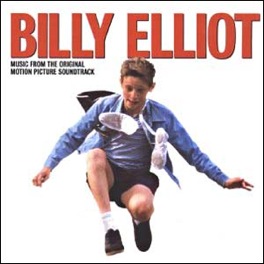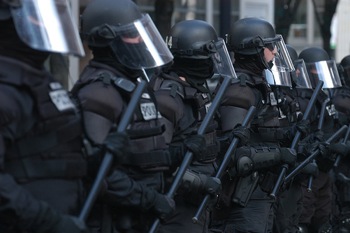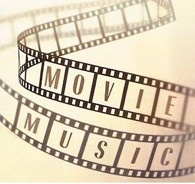
BILLY
ELLIOT
Billy
Elliot, written by
Lee Hall and directed by Stephen Daldry, is a modern
day version of the fairy tale “The Ugly Duckling,” In
this film, growing up in a small town in northeast
England, the ugly duckling is an eleven-year old son of
a poor coal miner. It is a time of struggle and
violence because of a bitter labor strike. Billy lives
in a tiny apartment with his father and grandmother,
and he shares a room with his older brother. Early in
the movie, Billy (Jamie Bell) is seen taking a pounding
in a boxing class. When he stands up still dazed, he
notices Mrs. Wilkinson’s (Julie Walters) ballet class,
which is being held in the same place. Billy is invited
to join the class, and Mrs. Wilkinson discovers that he
has an incredible gift of movement and dance. Billy’s
father (Gary Lewis) confronts him about the ballet
class because he feels that ballet is only for girls
“poofers” (gays), so he forbids him from ever going
again. Billy continues to train in secret while the
film develops an interesting comparison between him and
his best friend Michael (Stuart Wells), who is also
struggling with his identity. When Billy’s father
catches him dancing with Michael dressed in a tutu, we,
the audience, believe that it is all over. However,
Billy finds the courage to dance for his father to show
him the tremendous gift that Mrs. Wilkinson had
recognized. Both the family and the community rally
around the boy to raise enough money for an audition at
the Royal Ballet School. The film ends years later in a
London theater, where Billy Elliot, now famous and no
longer the Ugly Duckling, leaps onto the stage. He is
transformed into a beautiful swan performing for his
father, brother and Michael, who is escorted by his gay
lover. The transition is now completed for them all.
Writing
Billy Elliot draws a parallelism to the fairy tale “The Ugly Duckling,” and the writing elements used throughout the movie tell the story. For example, Billy Elliot uses the color yellow as a predominant motif; the interior of Billy’s house is yellow, Billy’s shirt is yellow at various times throughout the film, and there is a scene in the cemetery where Billy

Photography
Billy Elliot is also a brilliantly photographed film. For example, Cinematographer Brian Tufano captures Billy’s feet while jumping on the bed as a prelude to Billy discovering his talent as a dancer. Later in the film, we see a close-up of his shoes while Billy runs up the hill, and in the final scene we see Billy’s bare feet as he lands on the stage.

The cinematographer captures Billy and Debbie walking down the street while she is dragging a stick against the wall. The stick becomes a wand or pointer to direct the viewer’s attention from the children to the background. The scene begins with posters of human figures representing union strikers and flows into the shields of the riot police. During this sequence, Debbie is explaining to Billy that ballet is not just for “poofers” but also for everybody. Here the posters represent Billy’s drive to dance while the riot police represent Billy’s father as an authoritarian figure, who is saying no. The relationship between Billy and Michael is also told through clever cinematography. We see Billy and Michael filmed face-to-face four times: the lipstick scene, when Michael put Billy’s hand under his shirt, the tutu scene, and the good-bye scene. These depictions are traditionally associated with female-to-female or male-to-female interaction. Furthermore, Tuffano is portraying the transition of Michael into his eventual sexual identity and Billy’s acceptance of it.
Music

Music is
another vital element in the movie. At the beginning of
the film, we hear a song providing us with the spirit
of the movie. The title of the movie is a Douglac
Corbin song, “ A Child Is Born,” and the lyrics are
used to present our main character. “I was dancing when
I was twelve/ I was dancing out of the womb.” Another
song, “ London Calling,” parallels the story, but the
irony is that Billy cannot attend this first calling to
an audition in London because his brother Tony is
arrested during a riot. Background music is used to add
emotion and rhythm in the scene at the public library.
At this point, Billy has decided to take ballet
classes, and the song “Get It On/ Bang a Gong/Get It
On/ Take Me” presents Billy’s emotional attitude toward
ballet. Billy visits the library to check out a book
about ballet, but he can’t take the book because it is
only available for junior tickets. The ending lyrics
“Take Me” are heard as Billy is forced to “take” the
book by hiding it in his pants because the librarian
refused to let him check it out.
Movement

The film
adeptly uses movement to tell the story and shows
Billy’s emotions. When Billy runs down the hill things
are going great; in contrast, when he is in trouble or
when things are going wrong, he is seen running up the
hill. Again, the film sets the stage with an opening
scene where Billy is seen jumping on his bed suggesting
aspiration. Then, in the closing scene, we see Billy at
twenty-five, jumping on a stage performing as a
beautiful swan showing confidence, power, and
authority. Later in the movie, Billy is seen dancing,
kicking and tapping in combat boots, showing anger and
defiance.
Conclusion
Despite the
drama, intensity and realism of this film, the
story Billy
Elliot makes us
feel good. Personally, the film convinced me to return
to the dance school and continue my training. Other
people may be reminded of how family struggles and
conflicts can be resolved through acceptance and
understanding. The constant themes that resonate
through the movie are transformation, acceptance, and
being who you are. Perhaps there is a Billy Elliot
inside of each of us.